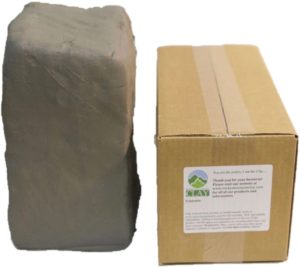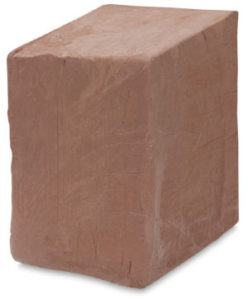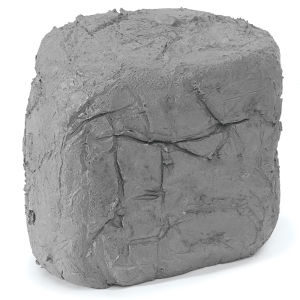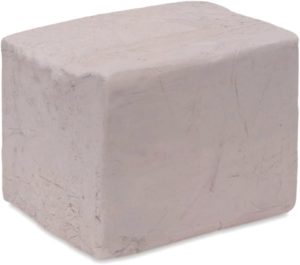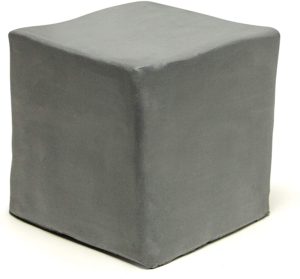Whether you’re a beginner or an expert potter, your clay can make or break your experience.
Pottery can be a challenging craft. And choosing the wrong clay is a stumbling block that could stop beginners or keep more experienced potters from making progress.
With the right clay, you can create ceramics with ease and fully enjoy the learning process.
What is the best type of clay for pottery?
Choosing the best type of clay isn’t as simple as naming one type superior among all others.
There are factors to consider: the clay characteristics, your skills as a potter, the tools at your disposal, the output you want to achieve, and more.
Different types of clay have distinct qualities that lead to a unique finished product. To say one is better than the other is subjective.
For example, many refer to porcelain clay as the highest quality and most regal among ceramic clays.
But for artists looking for clays that can be used with other mediums, air dry clay is their preferred clay type.
You also have to measure your proficiency. Are you a beginner?
While porcelain clay may be the most premium, stoneware clay is the best starter clay because it’s much easier to work with for beginners.
As you can see, your decision will depend on many different aspects.
What are the factors to consider when buying pottery clay?
Clay types
While there are types such as air-dry clay, epoxy clay, or paper clay, here we’re going to focus on ceramic clays.
In learning the basics of pottery clay, you’ll find that there are five kinds of ceramic clay: porcelain clay, earthenware clay, stoneware clay, ball clay, fire clay.
Ball and fire clay are not used by themselves. Ball clay is mixed in to improve the elasticity of another clay body. Fire clay is added to the clay mix to provide texture and to help prevent warping.
Porcelain Clay
Porcelain clay is considered the most sophisticated of all the clays and the highest quality. But this quality does come at a hefty price.
It’s silky to the touch in its clay form. And just as smooth in its hardened form because of its non-porous quality.
Because of its beautiful, polished finish, you can opt out of glazing.
Porcelain clay may not be the best choice for beginners because it’s more difficult to manipulate, slippery and unstable when wet. It’s also prone to shrinking and cracking under less experienced hands.
Earthenware Clay
Earthenware clay is the most malleable of the three clays, but it is also the weakest.
It’s a porous type of clay, making it suitable for wares like flower pots and bricks. But for earthenware that is made to hold liquids, you can seal it from leaks through glazing.
Earthenware clay fires at low temperatures and does not vitrify, meaning that it can not achieve a glass-like finish.
What it may lack in terms of glossiness, it easily makes up for in color. Earthenware comes in lovely shades of brown, red, orange, and yellow.
Stoneware Clay
Stoneware clay is the most recommended clay for beginners. It’s versatile because it works for a lot of different methods such as hand building and wheel throwing.
This is also because it has a good balance of firmness and flexibility. It’s soft and requires little water while staying stable and holding shape well.
Stoneware clay is non-porous after firing at medium to high temperatures.
Strength
Aside from the type of clay, it’s also good to know the durability of the clay.
Each type has different strengths. Some are more fragile than others, cracking and chipping more easily when fired and dried.
Texture
There are fine, medium, and coarse clays but when it comes to pottery, many prefer matte finishes.
However, a little grit is also good for both aesthetic and practical purposes. Textured clay is often better for hand molding and prevents warping, shrinking, or cracking.
To achieve that extra roughness, some clays contain grog – a ground, pre-fired clay and added to the clay body. Grog also has different textures, some with fine particles and others with larger particles.
For those using a wheel throwing technique, coarse clays can be abrasive so it’s best to go with no-grog or fine grog to prevent any discomfort.
Flexibility
It’s difficult to work with stiff clay. So for beginners, it’s advised to choose clays that are soft, smooth, but stable.
The plasticity of clay varies and others prefer dense clays that don’t lose shape or deform when there is added weight.
Water Absorption Rate
Some clays are more water-loving than others and figuring out the right ratio of water to clay may be challenging for those just starting.
If you’re a beginner, choose clays with low to moderate absorption rates. This way, you won’t need too much water for it to soften and won’t have to worry about how quickly it dries.
Firing Temperature
Clays fire at different temperatures and there are three temperature ranges – low firing, mid firing, and high firing.
The cone size indicates the correct firing needs of clay. This guide enumerates these cone sizes and their equivalent temperature ranges:
- Low firing – Cone 06-3 at 1850-2135 Fahrenheit
- Mid firing – Cone 4-7 at 2160 -2290 Fahrenheit
- High firing – Cone 8-10 at 2315-2380 Fahrenheit.
Tools
Let’s say you’ve been doing pottery long enough to have invested in some tools. But now, you have to consider which clay goes with which tool.
When using a potter’s wheel, should you be using coarse clay? Maybe not.
There are three types of machines used in pottery: tools for processing, shaping, and firing.
Examples of clay processors are:
- Clay mixers
- Pugmills
- Pugger mixers
- Tools for hand-mixing and wedging
For shaping and sculpting, potters use:
- Potter’s wheels
- Slab rollers
- Extruders
Last on the list is the kiln: one of the most important tools in a potter’s arsenal. A kiln is where clays are fired up and glazed.
If you’d like to see other tools, Soul Ceramics has a diverse catalog that you can browse.
Techniques
There are different sculpting and pottery techniques and some clays will suit one better than the others. Those still experimenting with different techniques should choose a versatile clay.
Now while we’ve listed down plenty of considerations, make sure to keep on researching other factors or checking out reviews from other potters.
Comprehensive youtube videos like Potter Crafter’s beginner’s guide to choosing pottery clay can also help you make a smarter choice:
The five best clay for pottery
Rocky Mountain Clay CT3
Across the board, Rocky Mountain Clay CT3 has gotten rave reviews from beginners and experts alike.
This is a great earthenware clay for beginners – smooth, pliable, and versatile.
Whether it’s hand-building or wheel throwing, you can shape it with ease because of its fine texture and flexibility.
It has a low firing temperature at cone 06 and has a very low shrinkage level. Out of the kiln, the clay hardens into stone with a lovely white color, ideal for those who want to paint over their ceramics.
The clay consists of only water and clay, making it non-toxic and a safe choice for kids and their art projects. You can check out the prices of this crowd favorite on Amazon.
AMACO High Fire Stoneware Clay
AMACO is a dependable brand that offers a wider range of clay types, from earthenware modelling clay to high fire stoneware clay.
This clay fires at a range of cones 5-10. And the higher the temperature, the less shrinkage there will be.
Buttery to the fingers, almost like porcelain clay, this brand has good water absorption, retains its shape and glazes very nicely.
The AMACO High Fire Stoneware Clay is up for grabs at online art stores like Blick.
Activa Blackjack Low Fire Clay
The Activa Blackjack Low Fire Clay is another widely-used brand by potters of all skill levels, available in nearly all stores from Amazon to Walmart.
Made with premium earth from East Texas, this clay is smooth and dense.
It can be manipulated in many ways, whether it’s hand-building or wheel throwing, and can also be air-dried or low-fired. When fired at cone 04-06, it dries to a pristine white color.
This clay is also safe and non-toxic with an AP (AP) and ACMI (ACMI) certification.
Aurora Pottery Whiteware Clay
Another safe and kid-friendly, low fire clay is the Aurora Pottery Whiteware clay.
It’s water-based clay that works well for artists of all ages, skills, and techniques – be it sculpting, modelling, slab building, and more.
Once fired, this clay becomes milky white and is great for painting over or adding other embellishments.
Aurora’s diverse product range also includes professional-grade air-drying clays that are used by sculptors. While its water-based clays are extremely flexible, its air-drying clays are also recommended for children and their art projects.
Aurora Pottery Whiteware Clay is available at Amazon.
Bastex Low Fire Clay
Despite being new to the scene, this brand holds up against its established competitors with its excellent consistency for modelling, coiling, sculpting, and throwing.
Bastex Low Fire Clay is an organic earthenware clay with the right balance of softness and stability.
This clay fires low at cone 04-06, can be glazed and turns out white. It’s another safe, non-toxic product that’s perfect for children’s school projects.
Getting started
Have we given you a lot to think about?
Well, it’s important to get this part of the pottery process right because it can help set up your project for success.
After learning about the basics of pottery clay, you’re ready to choose your clay and get started on your project.


